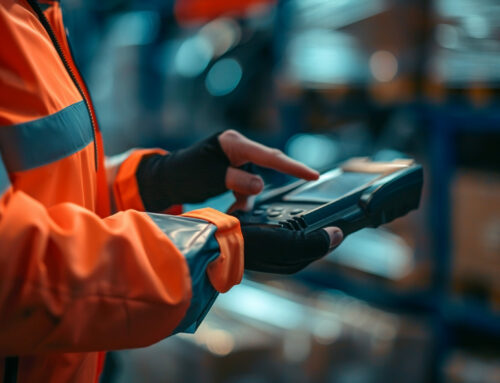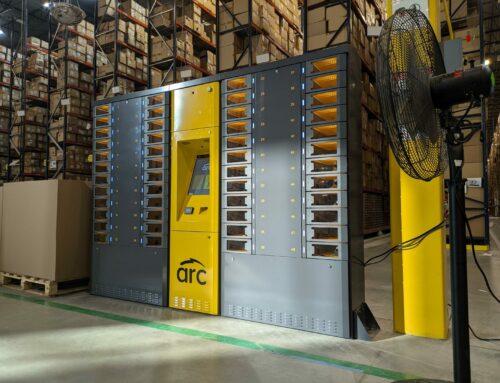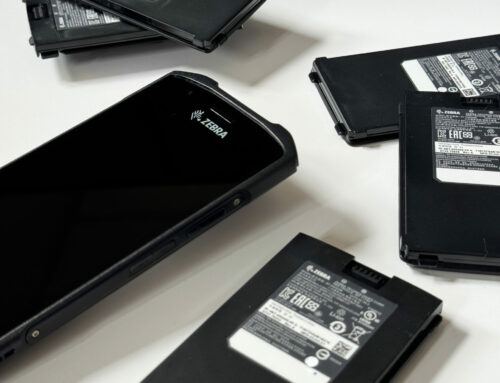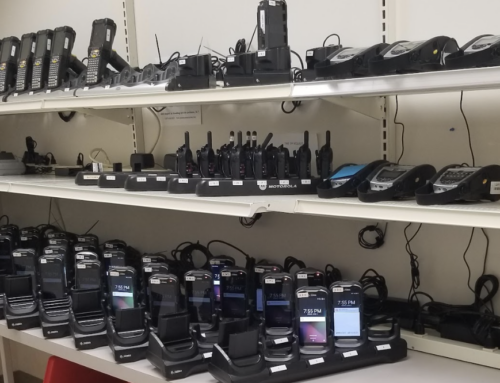Mobile Marketing: How Retailers Leverage Phone Addiction to Connect with Customers

We all know that mobile phones are ubiquitous (people are spending up to 5 hours a day staring down at screens[1]) and shoppers are not putting them away when they are in-store. In a recent blog post, we broke down the latest stats and 2018 trends for in-store phone usage. The most common activities people perform on their phone while shopping include researching products, comparing product prices, reading product reviews, and finding deals. Smartphones have become a critical part of the customer journey and savvy retailers are seizing this opportunity to build awareness, engage with customers and, maximize profits. Here are some of the ways retailers can leverage phone addiction:
SMS Marketing
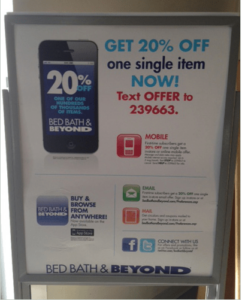
SMS is a retail marketer’s best kept secret. With virtually everyone on the planet now owning a cell phone, the most straightforward way to reach them is via SMS. Unlike emails, texts have a 99% open rate[2], with consumers opening just about any text message they receive! Big box retailers like Bed, Bath & Beyond are taking advantage of the power of SMS marketing. Walk into any store and you’ll likely notice a large, prominent sign at the entrance that encourages shoppers to sign up for mobile coupons by texting a keyword (eg. OFFER) to a specific short code number. By adding an incentive – 20% off a single item – Bed, Bath & Beyond has been able to maximize mobile messaging opt-ins and gain valuable customer data.
Social Media Marketing

In 2015, 98% of Fortune 500 companies used some form of social media to engage with their customers.[3] SMBs are not far behind, with 3 out of 4 of them capitalizing on social media networks – Facebook in particular – for their marketing efforts.[4] By combining mobile marketing with a strong social presence, retailers can connect with their customers on channels they frequently browse. Advertising store sales, new collections and partnerships on social media has never been easier, more targeted, or more cost-effective. Retail brands can target through age, gender, income and lifestyle segmentation. On Facebook, retailers can even deploy “Local Awareness” ads that micro target customers that are within close proximity to the storefront, driving foot traffic to the store.
Mobile Payments
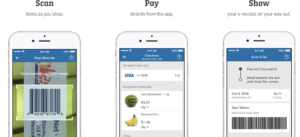
One of the biggest customer pet peeves with brick-and-mortar shopping is long or slow moving check-out lines. In a 2015 study from Harris Poll and Digimarc, half of the shoppers polled cited slow checkout speeds and long lines as their top two retail grievances. So why not take advantage of the ubiquity of mobile devices and the consumer’s need for speed by turning their smartphones into a digital payment channel? By allowing customers to pay within your store’s app, they can bypass annoying checkout lines and free up your sales reps to focus on improving the customer experience. Retail giant Sam’s Club is one of the retailers at the forefront of the mobile payments revolution. They released the first iteration of their now widely used Scan & Go app back in 2012 and have been improving it ever since. The app allows Sam’s Club customers to scan and bag items, including produce, while they shop and pay directly with their phones through the app.
Chatbots
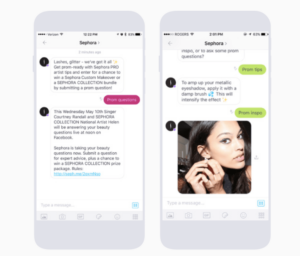
According to a recent Salisfy study[5], a whopping 77 percent of shoppers use their phones (as opposed to a sales associate) to find information when they’re shopping in-store. This is clearly presents an opportunity for retailers to build customer engagement and collecting data. Chatbots are an innovative solution for retailers looking to provide a seamless and positive in-store experience. By answering customer questions in real time, collecting customer insights and then offering personalized assistance (using context from the customer’s prior online and offline shopping activity), chatbots are the perfect bridge between the digital and brick-and-mortar shopping experience. Beauty retailer Sephora, for example, turned to messaging platform Kik to engage with teenagers for prom.[6] Through the Kik chatbot, Sephora developed a custom experience for its teen shoppers, filled with prom-specific content like makeup tips, style inspiration, and custom video content.
Price Matching

Convincing consumers to stop researching products on their phones is a losing battle for retailers. But some have turned the practice of showrooming to their advantage by price matching major online competitors. Price matching is a policy that isn’t relevant to all retailers, but when it is it can be a simple way to convert a customer who’s “just browsing” into one who’s actually making a purchase. According to a 2014 survey by BDO[7], price matching was cited by CFOs of major retailers as the second most successful holiday promotional strategy (second to free shipping). It’s also the secret to electronics retailer Best Buy’s success in the age of Amazon.
Product Reviews

It’s no secret that people tend to seek out shopping advice from friends and family, but online reviews from strangers also heavily impact purchasing decisions. According to a recent survey from Influence Central[8], 85% of female shoppers said they consider online reviews extremely/very important when making a purchase. Nearly 60% of them checked online reviews of a product from their smartphones while shopping in a brick-and-mortar store. One way retailers can stand out from competitors and leverage our Googling habits is by incentivizing reviews of their products on their website.
This is especially important for retailers whose online catalog is identical or nearly identical to their physical store’s inventory and who are selling products that would highly benefit from post-purchase reviews like appliances, electronics, furniture, etc. Don’t underestimate the power of a glowing 5-star review (or a scathing 1 star rant).
Phone Charging Stations
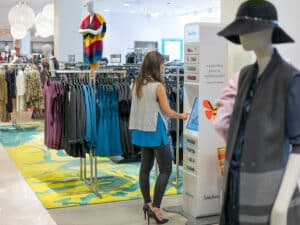
We couldn’t finish our roundup without featuring our own product: phone charging stations and kiosks. Since 2012, we’ve charged over 5 million phones for retailers like Neiman Marcus, Under Armour and Uniqlo. Our charging kiosks can deliver delight (and a full battery certainly does that!), collect customer data (eg. phone numbers and/or emails), send out promotional SMS messaging, or simply encourage shoppers to separate from their phones so they can devote their full attention to an engaging shopping experience.
Our phone charging stations also positively impact a retailer’s bottom line, increasing basket size by 29% and conversions by 54%.[9] Charging kiosks are no longer simple store amenities but rather powerful omnichannel marketing tools that can enhance the customer’s shopping experience, leaving them with a lasting positive impression of your brand.
[1] Source: https://techcrunch.com/2017/03/03/u-s-consumers-now-spend-5-hours-per-day-on-mobile-devices/
[2] Source: https://www.singlepoint.com/products/text-marketing
[3] Source: http://www.v12data.com/blog/5-hot-social-media-strategies-boosting-sales-retailers-2016/
[4] Source: http://www.bizreport.com/2017/03/24-of-us-smbs-not-using-social-media-marketing.html
[5] Source: https://www.retailcustomerexperience.com/news/shoppers-favor-digital-over-associates-in-product-data-search/
[6] Source: https://www.kik.com/casestudy/sephora/
[7] Source: https://www.bdo.com/insights/industries/retail-consumer-products/2015-retail-compass-survey-of-cfos
[8] Source: https://www.business.com/articles/7-surprising-ways-online-reviews-have-transformed-the-path-to-purchase/
[9] Source: https://chargeitspot.com/gfk-study/



